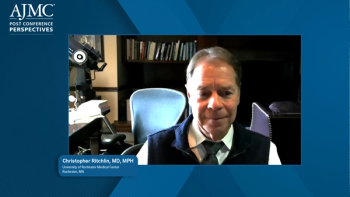
Decoding Progressive Pulmonary Fibrosis
Panelists discuss how progressive pulmonary fibrosis (PPF) and idiopathic pulmonary fibrosis (IPF), though distinct in etiology, share a common trajectory of irreversible lung scarring and functional decline—highlighting the importance of recognizing progressive phenotypes across interstitial lung diseases to guide timely diagnosis, personalized treatment, and improved patient outcomes.
Episodes in this series

PPF and IPF are related but distinct clinical conditions characterized by irreversible lung scarring that worsens over time. IPF is a specific, well-defined form of fibrosing interstitial lung disease (ILD) with an unknown cause, typically seen in older adults. It presents with a usual interstitial pneumonia pattern on high-resolution CT and is known for its relentless progression, poor prognosis, and limited treatment options. IPF is generally diagnosed only after other known causes of fibrosis—such as autoimmune diseases or environmental exposures—have been ruled out.
In contrast, PPF is an umbrella term used to describe a progressive fibrosing phenotype that can occur in a variety of ILDs, including connective tissue disease-associated ILD, chronic hypersensitivity pneumonitis, and fibrotic nonspecific interstitial pneumonia. While these conditions may have different etiologies and early disease characteristics, a subset of patients with these ILDs develops a fibrotic pattern that mimics IPF in its clinical behavior—worsening symptoms, declining lung function, and increasing radiographic fibrosis. Importantly, the term PPF helps unify the approach to managing patients who show evidence of disease progression, regardless of the underlying diagnosis.
Pathophysiologically, both IPF and PPF involve dysregulated wound healing and persistent fibroblast activity, leading to excessive collagen deposition and architectural distortion of the lungs. However, inflammation plays a more prominent early role in some forms of PPF, depending on the underlying cause. From a clinical standpoint, distinguishing between IPF and PPF is crucial because it guides treatment decisions. While antifibrotic therapies like nintedanib may be effective in both conditions, patients with PPF may also benefit from immunosuppressive agents if there is a significant inflammatory component. Recognizing the progressive phenotype across different ILDs is key to improving outcomes through earlier diagnosis and personalized treatment strategies.
Newsletter
Stay ahead of policy, cost, and value—subscribe to AJMC for expert insights at the intersection of clinical care and health economics.












































